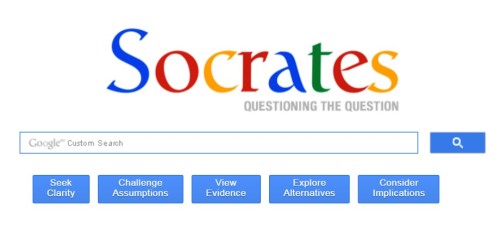
The Socratic Method, or Socratic Learning Method, which is what we advocate during our Physics tuition classes, is based on a questions planned to test logic and fact to help a person or group decide on their consistency on certain ideas or concepts. The Socratic Method through discussion between individuals, stimulates critical thinking and illuminates ideas, which is also a strong discussion tool involving discussion of a point of view that might be questioned, such as in a debate. The method comprise four main points: stating related preconceptions, clarifying these preconceptions, testing self-generated hypotheses and validating / invalidating these hypotheses.
The Socratic Learning Method focuses on another teaching and learning approach by connecting a classical learning method through inquiry and by helping them to make it a mental habit, pupils will become more independent and self-directed thinkers. If errors are made, for example in reasoning, they should not be ignored. These errors should be analyzed and be used as an example to improve upon, through acceptance of the fact that mistakes are made, but it is possible to learn from one’s mistakes. Students will have greater knowledge and understanding of concepts that they develop through experience and insight rather than in ideas provided to them, so make them feel that a new idea is theirs and make them feel that they have contributed.
In cognitive science, developmental psychology and education it is said that The Socratic Learning Method not only enhances students’ learning, it also aids pupils in organizing knowledge and to monitor their own learning. It was introduced in the classroom as a new teaching method as an approach to promote critical thinking and develop logical reasoning.
This method of learning is particularly useful when studying subjects related to the sciences, such as physics or mathematics. Due to the fact that physics deals with complex problems and concepts, it is necessary for a pupil to fully comprehend the reasoning involved, which cannot be done without stimulation of critical thinking skills as a technique to understand why such concepts/problems exist.
It is difficult to learn advanced concepts if one does not understand the purpose. Therefore, one has to tackle a problem or scenario by thinking what they would do, instead of what others might do. After the necessary questioning procedure, it is then possible to combine one’s own ideas with that of the conventional method to identify similarities and difference. Thus, after the questioning procedure, your own thoughts are either “accepted” or “rejected” according to the educational norm, with errors resulting in further analyzing and, finally, acknowledging the mistakes to avoid possible recurrences.

